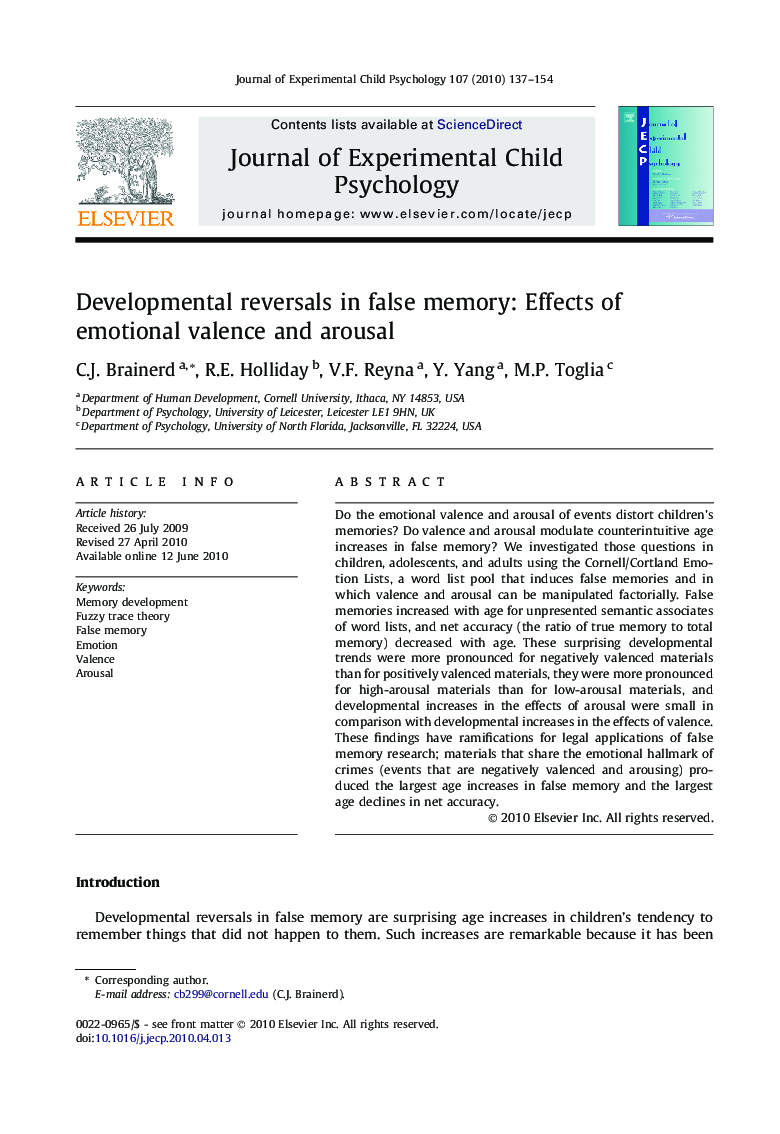| Article ID | Journal | Published Year | Pages | File Type |
|---|---|---|---|---|
| 918613 | Journal of Experimental Child Psychology | 2010 | 18 Pages |
Do the emotional valence and arousal of events distort children’s memories? Do valence and arousal modulate counterintuitive age increases in false memory? We investigated those questions in children, adolescents, and adults using the Cornell/Cortland Emotion Lists, a word list pool that induces false memories and in which valence and arousal can be manipulated factorially. False memories increased with age for unpresented semantic associates of word lists, and net accuracy (the ratio of true memory to total memory) decreased with age. These surprising developmental trends were more pronounced for negatively valenced materials than for positively valenced materials, they were more pronounced for high-arousal materials than for low-arousal materials, and developmental increases in the effects of arousal were small in comparison with developmental increases in the effects of valence. These findings have ramifications for legal applications of false memory research; materials that share the emotional hallmark of crimes (events that are negatively valenced and arousing) produced the largest age increases in false memory and the largest age declines in net accuracy.
